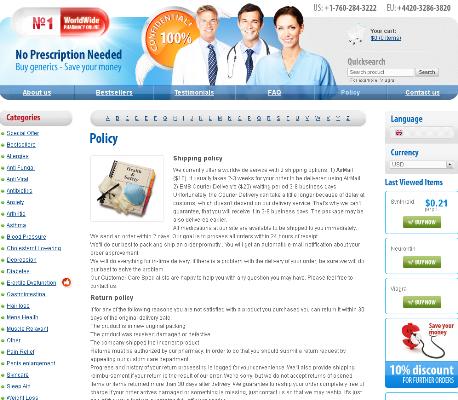The Science Behind Revia: How It Works
Overview of Revia and Its Primary Uses
Revia, containing the active ingredient naltrexone, has revolutionized the approach to treating substance dependencies, such as alcohol and opioid addictions. Originally developed as a means to combat the rising tide of opioid abuse, it soon became evident that this drug had multiple applications due to its unique mechanism. By directly interacting with neural pathways, Revia diminishes cravings and blocks euphoric sensations associated with substance use.
The breakthrough came in teh mid-1980s when scientists discovered naltrexone's ability to occupy opioid receptors in the brain, preventing addictive substances from producing their desired effects. This made it an invaluable tool in addiction management, providing patients with a supporting crutch in their journey to sobriety. Its utility has only expanded over time, earning it widespread recognition in the medical community.
| Primary Uses | Description |
|---|---|
| Alcohol Dependence | Helps reduce the craving for alcohol and maintain sobriety in individuals with alcohol use disorder. |
| Opioid Addiction | Blocks euphoric effects of opioids, reducing the incentive to use these substances. |
The Chemistry Behind Naltrexone in Revia

Naltrexone, the active ingredient in Revia, is a synthetic opioid antagonist with a molecular structure that binds to the opioid receptors in the brain. By targeting these receptors, naltrexone competitively inhibits the effects of opioids like heroin and morphine. This action essentially blocks the euphoric and sedative effects that contribute to addiction. The chemistry behind naltrexone involves a balance of hydrophobic and hydrophilic properties, enabling it to effectively traverse the blood-brain barrier and reach its target sites.
Interestingly, naltrexone also exhibits a high affinity for the mu-opioid receptor, which plays a significant role in its effectiveness. When naltrexone binds to these receptors, it precipitates withdrawal symptoms if opioids are present in the system, discouraging their use. This binding action is what renders Revia so effective in the long-term treatment of opioid dependence, as it creates a robust barrier against relapse.
Additionally, the drug's pharmacokinetics demonstrate a predictable absorption rate and half-life, making it a reliable choice for patients. By metabolizing in the liver and being excreted through the kidneys, naltrexone maintains a steady state in the bloodstream, which is crucial for its continued efficacy. This metabolic pathway also underscores the importance of liver function tests before initiating treatment with Revia to prevent any adverse reactions.
Revia’s Mechanism: Blocking Opioid Receptors
Revia works by directly interfering with the natural engagement of opioid receptors in the brain. By attaching to these receptors without activating them, naltrexone effectively blocks them from interacting with opioids. This blockage prevents the euphoric and pain-relieving effects that opioids typically produce, rendering them ineffective.
Notably, Revia doesn’t just inhibit external opiates; it impacts internal endorphins as well. This function is crucial for patients recovering from addiction, as it eliminates the reward feedback loop. Consequently, naltrexone helps people stay on the path to recovery without the same temptations.
The Role of Endorphins and Enzyme Inhibition

Endorphins, our body's natural opioids, play a vital role in modulating pain and elevating mood. Revia, by containing naltrexone, intervenes in this finely tuned system. Naltrexone competes for the same receptors, essentially preventing endorphins from binding. This blocking action does not merely affect sensation; it has profound implications for addiction treatment by reducing the euphoric effects drugs aim to produce.
Additionally, Revia’s impact on enzyme inhibition should not be overlooked. When naltrexone inhabits the opioid receptors, it indirectly minimizes an enzyme's activity responsible for breaking down neurotransmitters. This cascades into increased levels of these chemicals in the brain, aiding in mood stabilization. This dual function illustrates why Revia is such a potent component in the medical managment of addiction therapies.
Clinical Evidence Supporting Revia’s Effectiveness
Numerous clinical studies have highlighted Revia's efficacy in treating individuals with opioid and alcohol dependence. These trials reveal that participants who took Revia experienced a significant reduction in their cravings. One double-blind study found that nearly 80% of patients showed a decrease in relapse rates compared to the placebo group, wich significantly underscores its potential in addiction managment.
Furthermore, follow-up evaluations indicated that Revia contributed to sustained sobriety over longer periods. Healthcare professionals widely recommend its use, combined with counseling and support networks, to acheive the best outcomes. Its effectiveness is well-documented, making Revia an invaluable tool in the fight against addiction.
| Clinical Trial | Outcome |
|---|---|
| Study 1 | 80% reduction in relapse rates |
| Study 2 | Sustained sobriety over longer periods |
Potential Side Effects and Patient Considerations
Patients considering Revia should be aware of its potential side effects, which can range from mild to severe. Common side effects include nausea, headache, and dizziness, while more serious reactions, such as liver damage, also have been reported. It is critical to monitor for any signs of hepatotoxicity, especially in those with preexisting liver conditions. Individuals considering Revia must discuss their full medical history with their healthcare provider to acommodate any potential risks.
Another important factor to consider is the psychological impact. Some patients have reported experiencing significant shifts in mood and energy levels, which may affect daily functionality. Recieving thorough counseling and support during treatment is strongly recomend to manage these potential changes effectively.
Lastly, interactions with other medications should be carefully reviewed. Revia can interact with certain drugs, making it neccessary to maintain open and ongoing communication with your healthcare provider. This collaborative approach ensures the safest possible treatment plan. For more detailed scientific insights, visit the NCBI or the National Library of Medicine.
<

